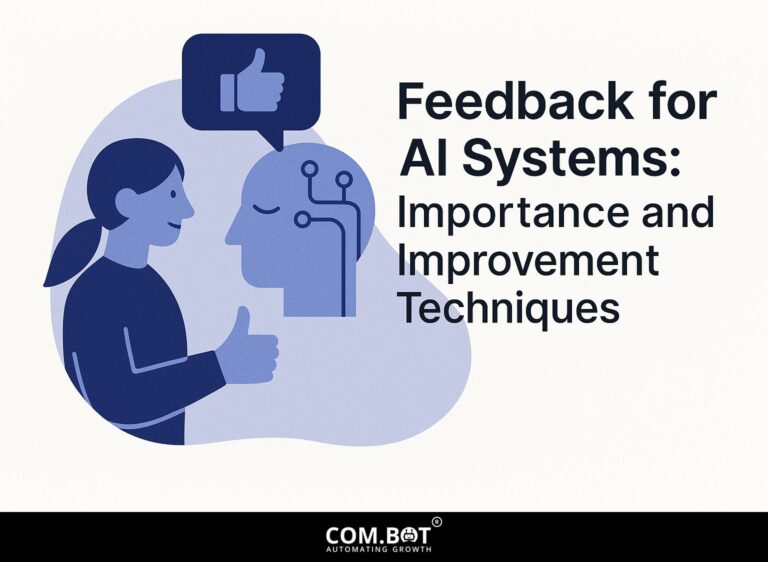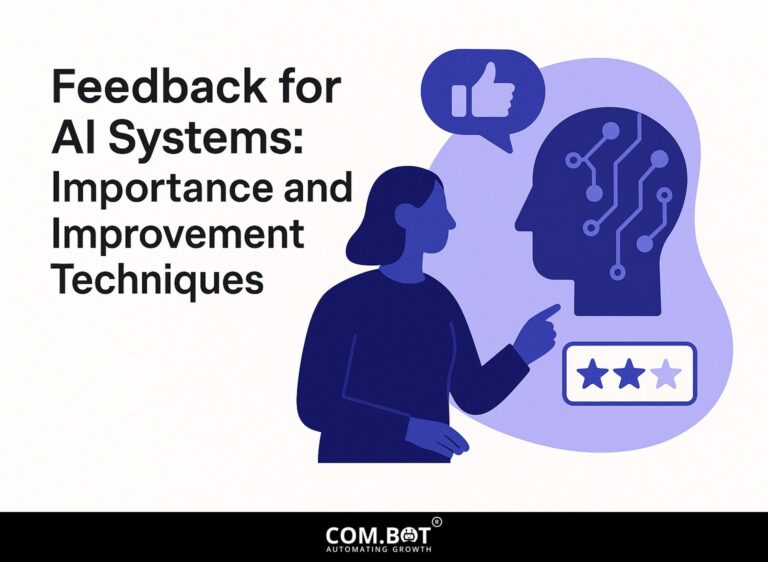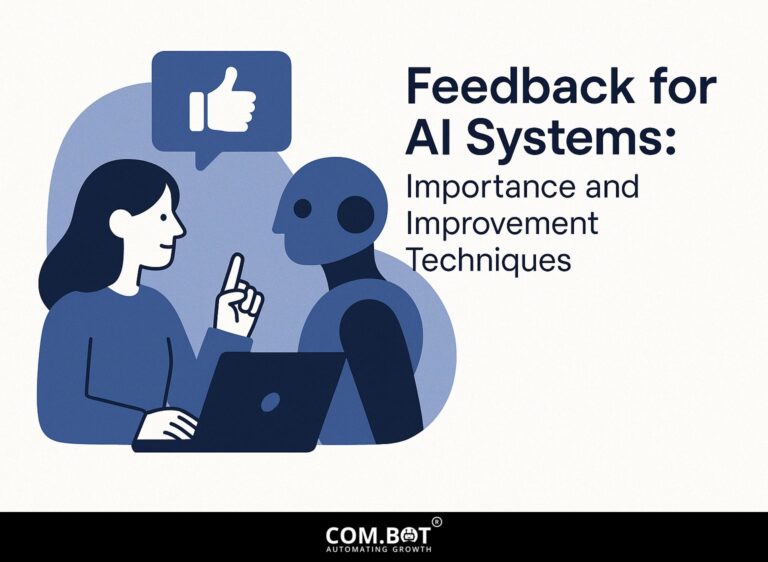Feedback for AI Systems: Importance and Improvement Techniques
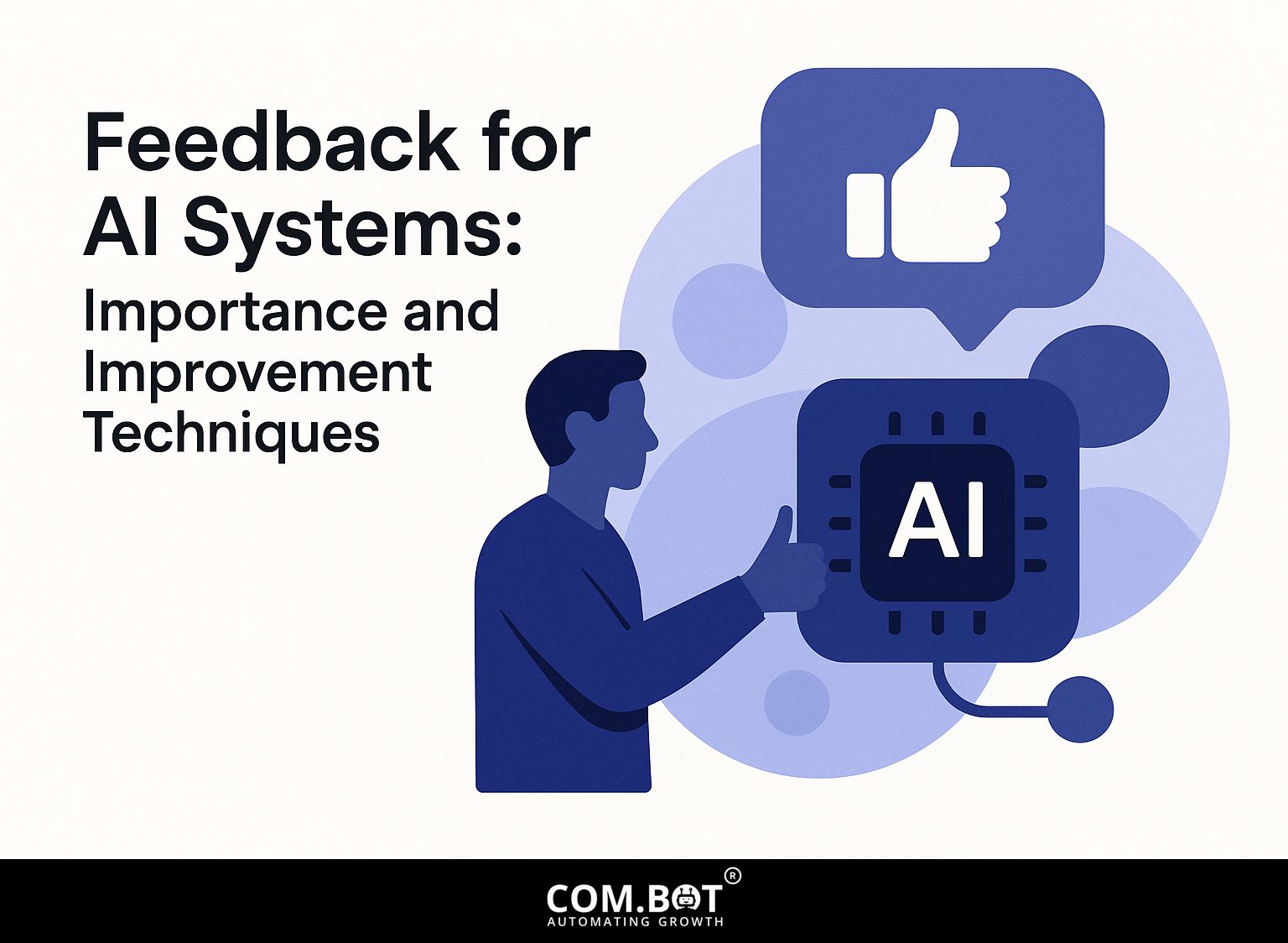
In the rapidly changing area of artificial intelligence, using human input is important for enhancing machine learning systems. Techniques like reinforcement learning benefit from human feedback, allowing tools like Label Studio to improve their accuracy and minimize bias. This article looks into why feedback is important for AI systems. It discusses good ways to gather information and improve performance to make the most out of AI.
Key Takeaways:
- 1 Types of Feedback in AI Systems
- 2 AI Feedback Mechanisms Statistics
- 3 Importance of Feedback for AI Improvement
- 4 Techniques for Gathering Feedback
- 5 Implementing Feedback Loops
- 6 Challenges in Feedback Implementation
- 7 Frequently Asked Questions
- 7.1 What is the importance of feedback in AI systems?
- 7.2 How can feedback be collected for AI systems?
- 7.3 Why is it necessary to continuously improve AI systems?
- 7.4 What are some techniques for improving AI systems based on feedback?
- 7.5 How does feedback from users help in enhancing AI systems?
- 7.6 How can AI systems use feedback to tailor user experiences?
Definition and Overview
AI feedback systems involve methods and tools that make AI work better by using human feedback and computer-based analysis.
These systems are essential in various applications. For example, in customer support, platforms like Zendesk use user interactions to improve response models and make service more efficient. This approach aligns with the principles outlined in our analysis of AI Bots for Customer Support: Benefits and Satisfaction.
In self-driving cars, sensors and user inputs continually update the driving programs to make driving safer and better.
Tools such as Amazon SageMaker provide built-in mechanisms to collect feedback on predictions, which can help in retraining models.
By integrating these feedback systems, AI can continuously evolve, becoming more effective in real-world scenarios.
Significance of Feedback in AI
Including feedback in AI is very important. Research indicates that AI systems with strong feedback processes can increase user satisfaction by up to 30%.
In healthcare, using patient feedback can help improve AI tools for diagnosing diseases, resulting in more accurate identification of illnesses.
For example, companies are using real-time patient surveys to collect feedback on AI performance, and then updating algorithms based on the results.
In finance, investment platforms use feedback from users about how accurate predictions are to make their algorithms better and more trustworthy.
By focusing on gathering feedback and using it effectively, organizations can make sure their AI systems keep improving to meet user needs, leading to higher satisfaction and involvement.
Types of Feedback in AI Systems
AI systems use two main feedback types: feedback from people, which improves training data, and systems that automatically review performance measurements. For a deeper understanding of these feedback mechanisms and how they can be improved, see also our exploration of feedback for AI systems.
AI Feedback Mechanisms Statistics
AI Feedback Mechanisms Statistics
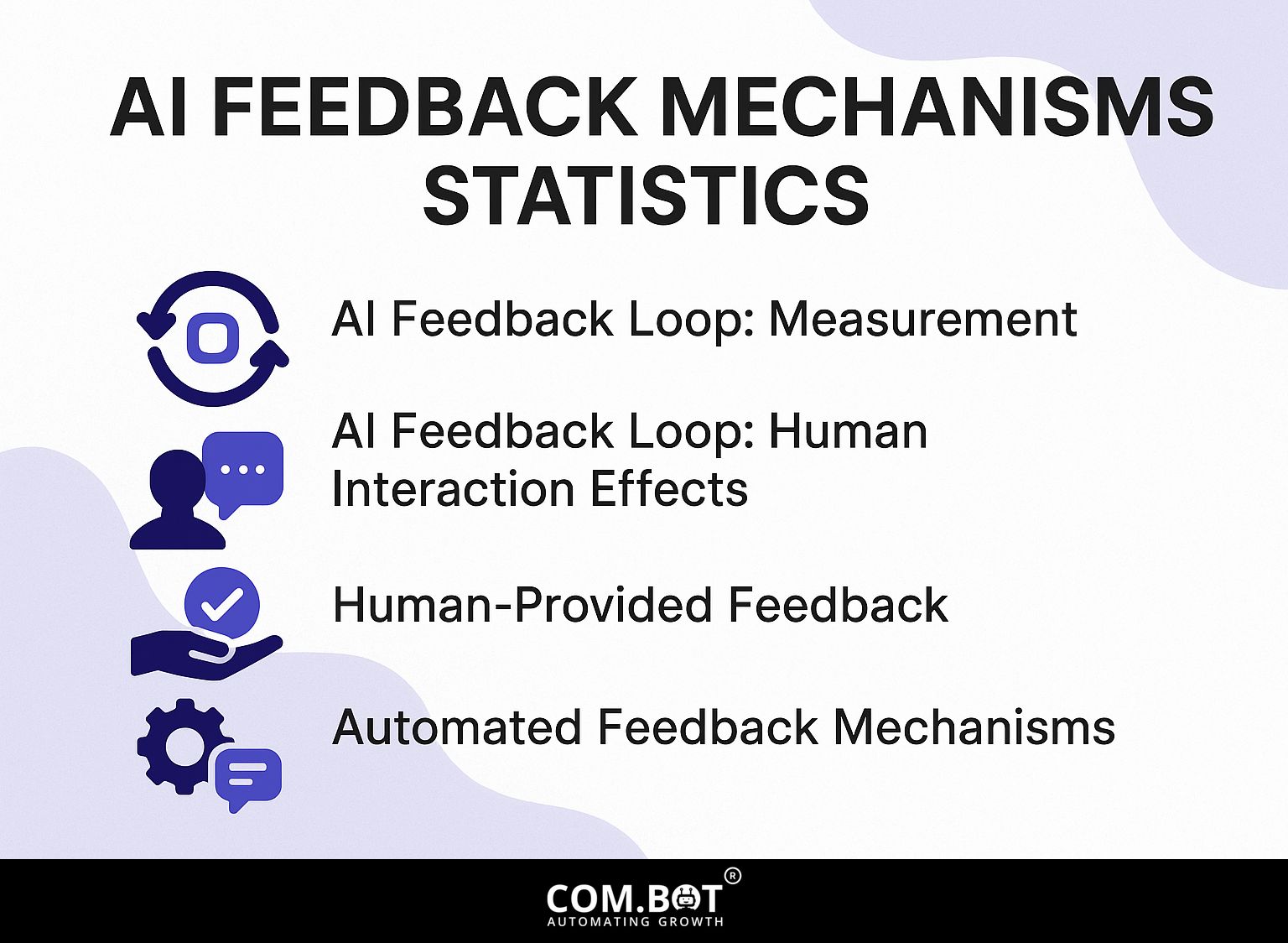
AI Feedback Loop: AI Feedback Loop Measurement
AI Feedback Loop: Human Interaction Effects
The AI Feedback Mechanisms Statistics give clear information on how AI affects customer views and fixes biases in algorithms. This information is important for grasping the relationships between AI-created content, how people interact with it, and the overall enhancements in AI system accuracy.
AI Feedback Loop Measurement highlights the significant impact of AI on consumer behavior. A striking 85% of customers are influenced by AI-generated content “, showing how AI can create stories and influence views.” AI is essential in marketing and decision-making. It generates content that directly engages and persuades target audiences.
- AI Influence in Correcting Biases: Despite its power, AI’s current effectiveness in correcting biases is minimal, at 0.49%. This statistic reveals challenges within AI systems, particularly in achieving neutrality and fairness. The low percentage indicates a need to continually improve and watch AI algorithms so they can better fix themselves and minimize biases.
- Learning Rate with Biased Algorithm: With a learning rate of 1.0 When algorithms are biased, AI systems do not improve well in biased environments. This measure highlights the importance of creating algorithms that can learn and change without continuing current biases, stressing the need for strong feedback systems.
Human Interaction Effects elaborate on the interaction between AI and human users, indicating that 32.36% of interactions with stable diffusion lead to bias. This statistic points to the potential risk of AI reinforcing existing biases through user interactions, highlighting the need for systems that can identify and mitigate bias in real-time.
Moreover, AI contributes to a modest 1.55 improvement in social accuracy, demonstrating its potential in enhancing the accuracy of information and interactions. While this improvement is slight, it suggests that AI can serve as a tool for refining communication and reducing misinformation when effectively integrated.
In conclusion, the AI Feedback Mechanisms Statistics highlight the significant impact of AI on shaping consumer actions and making predictions more accurate, even though there are still issues with minimizing biases. Ongoing progress and growth in AI systems are important for getting the best results and making sure they are fair and correct.
Human-Provided Feedback
Human-provided feedback involves direct input from users, often collected through surveys or user interactions, which can guide AI training data adjustments.
To gather useful human feedback effectively, tools like Label Studio can be used for data labeling. With Label Studio, users can categorize and label data points, facilitating the identification of areas needing improvement.
Sending surveys with tools like Google Forms or Typeform lets you ask specific questions about how users feel. Adding features for in-app feedback lets you gather immediate user opinions during their use of the app.
This feedback is important for improving large language model performance by fine-tuning training datasets to better match user needs.
Automated Feedback Mechanisms
Automated feedback systems use machine learning to analyze performance data and provide instant information for continuous improvement.
Use tools like Google Analytics and Mixpanel to monitor how users interact and collect useful information.
For example, a tech company might use Optimizely for A/B testing, allowing teams to make features better by analyzing user interactions.
Tools like TensorBoard can visualize model performance in real-time, identifying areas needing adjustment.
Examples of successful applications include Microsoft, which uses automatic feedback to improve its Azure services, leading to higher user satisfaction and fewer errors.
By regularly checking feedback, organizations can fix problems early, leading to stronger AI systems.
Importance of Feedback for AI Improvement
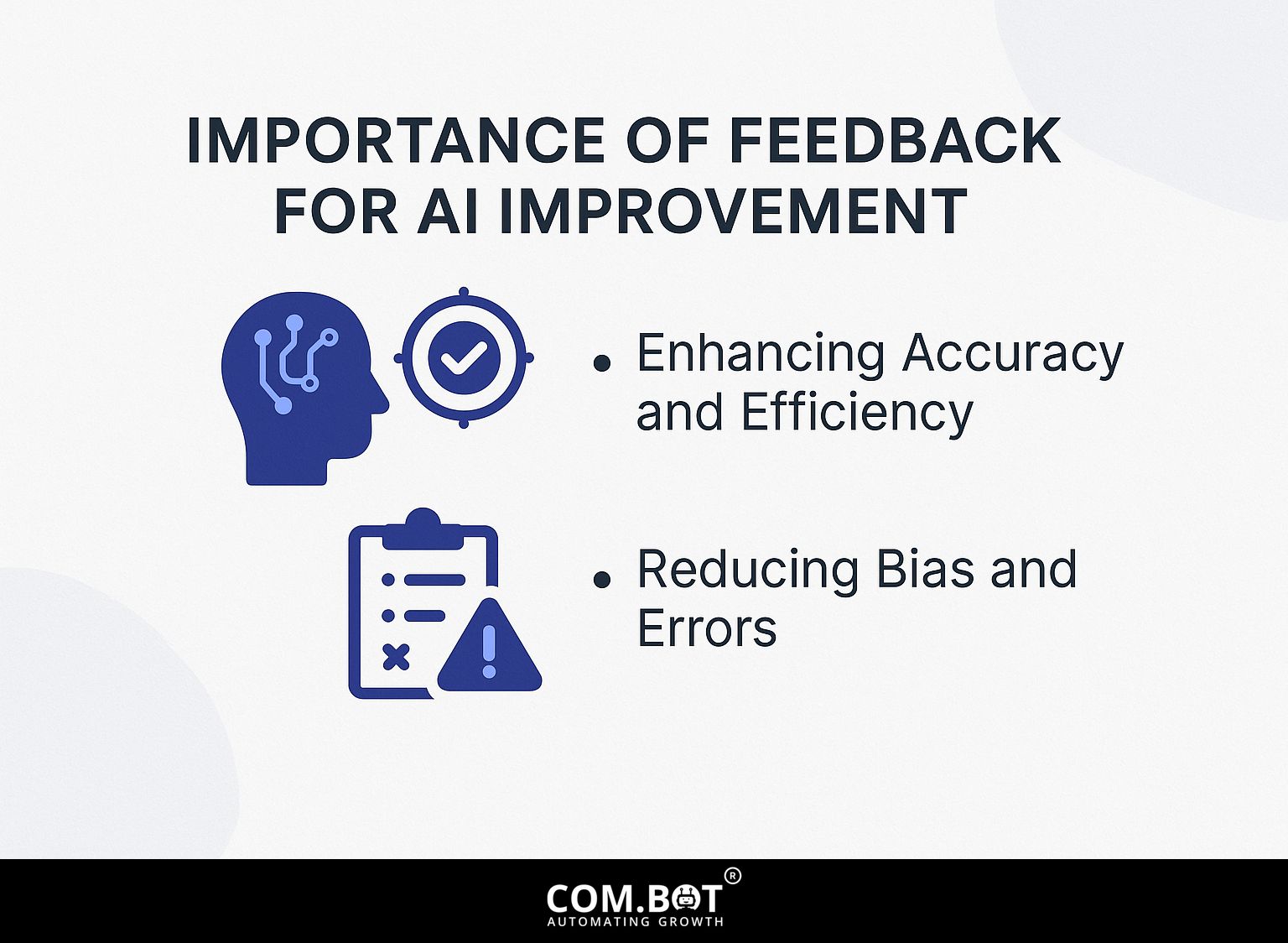
Feedback is important for making AI better because it directly impacts its accuracy and effectiveness, reducing errors during training by up to 50%. For those interested in exploring how feedback can be effectively utilized to enhance AI systems, check out this related insight on feedback techniques.
Enhancing Accuracy and Efficiency
Using feedback systems can greatly improve AI accuracy, often reducing error rates by 20%.
For example, using user feedback while training can improve language models. Studies found that models receiving consistent feedback increased understanding by 15%, leading to more accurate responses.
Tools like Google Cloud’s AI Platform provide built-in feedback loops, enabling developers to analyze user interactions. Using A/B testing means you can make quick changes; one project saw a 30% rise in user satisfaction by quickly acting on feedback.
By measuring these metrics, organizations can adjust their algorithms, leading to more effective and user-friendly AI systems.
Reducing Bias and Errors
Feedback loops are instrumental in identifying and correcting biases, with structured feedback reducing bias exposure by as much as 40%.
For instance, a tech company integrated user feedback into its AI development process, allowing users to flag biased outputs. They used tools like SurveyMonkey to collect feedback directly, which helped make changes to the algorithm.
Another successful example is the recruitment platform that implemented blind hiring techniques combined with regular audits, reducing gender bias by 30%. By regularly checking user interactions and results, organizations can tackle biases effectively and create AI systems that connect with a wide range of users.
Techniques for Gathering Feedback
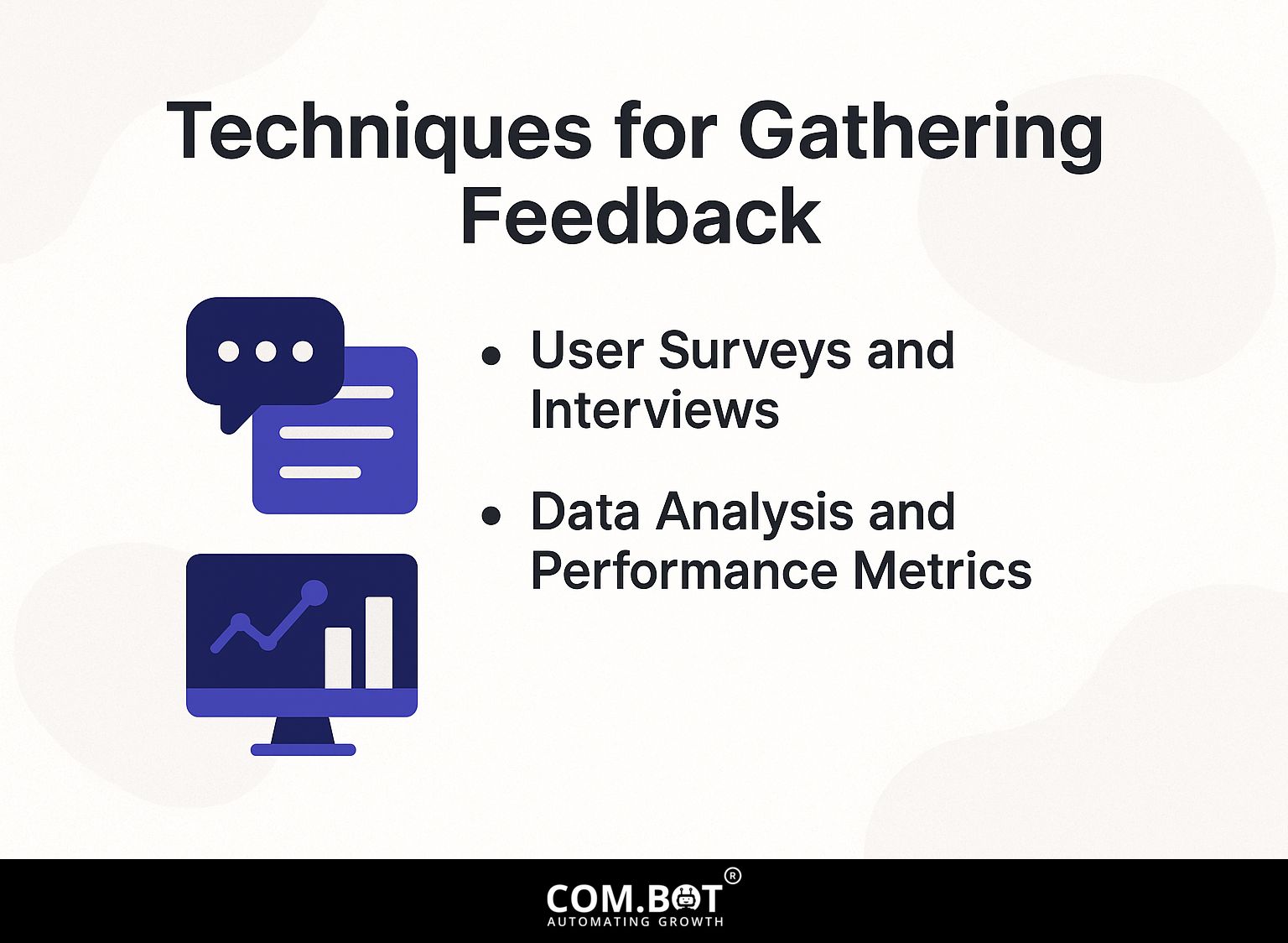
Collecting useful feedback involves different methods, such as user surveys and examining data, which can improve the AI training process. Those interested in enhancing these techniques might find our insightful guide on feedback for AI systems to be a hidden gem.
User Surveys and Interviews
When user surveys are created well, they can provide information to make AI models better, with a 30% response rate being common.
To create impactful user surveys, follow these steps:
- Start by clearly stating your goal-what exact information do you need?
- Next, create open-ended questions like ‘What feature do you find most useful?’ to collect detailed feedback, along with closed-ended options such as ‘On a scale of 1-5, how would you rate our AI suggestions?’
- Tools like SurveyMonkey or Google Forms make it easier to create and send out surveys.
- Consider encouraging participation with discounts or special content, as this can greatly increase your response rate.
Data Analysis and Performance Metrics
Examining data helps understand feedback, showing where AI systems do well and where they need improvement.
Important metrics to track are accuracy, exactness, recall, and F1 score.
Use Google Analytics to visualize data trends and track user engagement. For instance, if you notice a drop in accuracy over a month, consider revisiting your data input processes or model parameters.
Setting up dashboards to compare metrics across different AI models can reveal which performs best under specific conditions. Review this information regularly to improve your AI system’s performance over time.
Implementing Feedback Loops
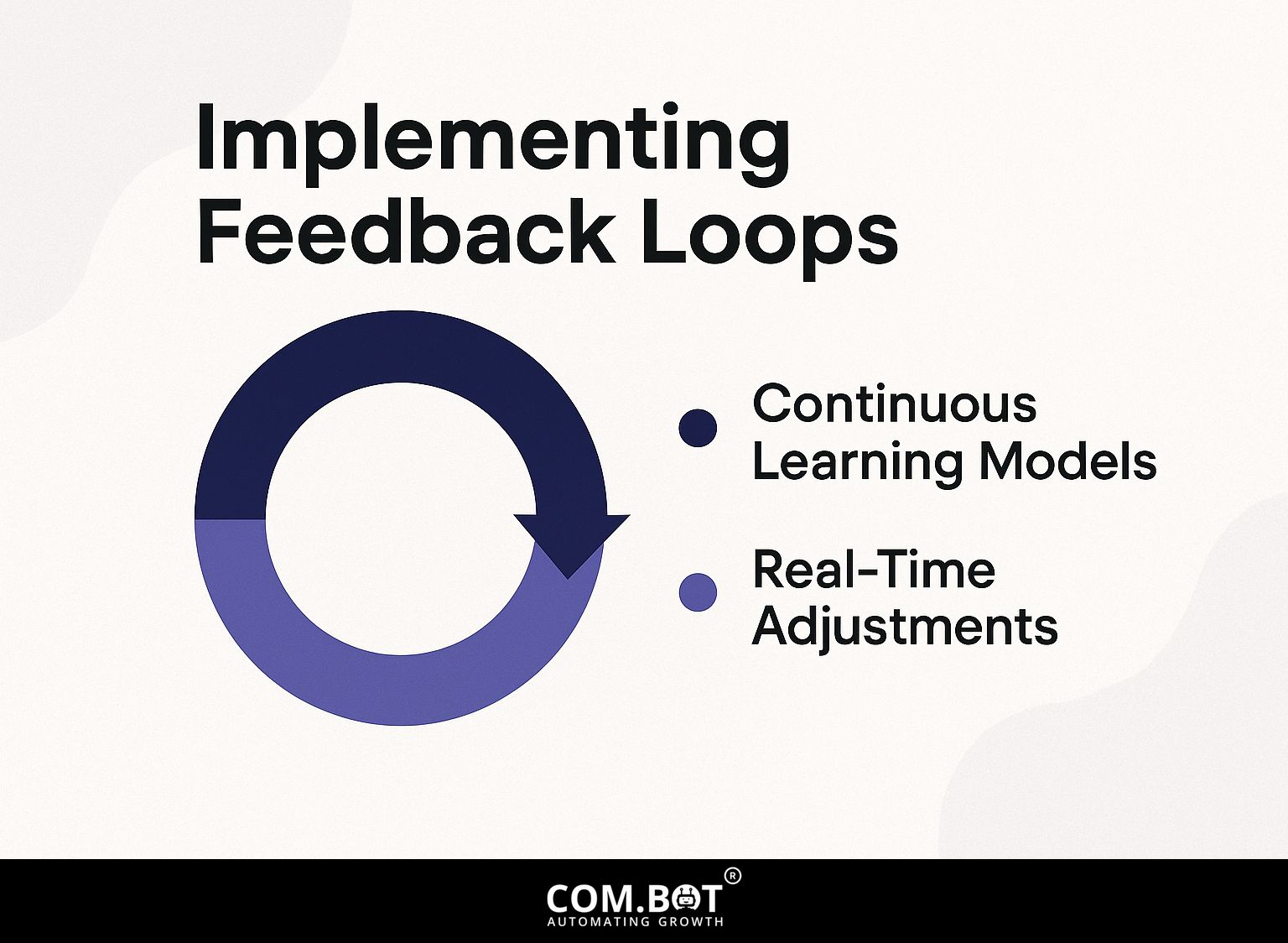
Feedback systems let AI learn from users’ actions, helping the AI to function more effectively.
Continuous Learning Models
Models that learn continuously let AI systems update their actions with regular feedback, which helps them to keep getting better.
Companies like Google and Netflix exemplify the successful application of continuous learning models. Google uses reinforcement learning in its ad placement systems, constantly improving ad visibility based on live user interactions.
Netflix uses a method called collaborative filtering to make better content suggestions. When users watch and rate shows, the system changes its suggestions based on this activity.
For businesses wanting to use similar strategies, tools like TensorFlow and PyTorch offer ways to create and use these models effectively, providing useful information that improves user experience.
Real-Time Adjustments
Quickly adjusting AI decisions based on feedback can significantly improve their performance, as seen in self-driving cars.
In self-driving cars, sensors and cameras collect immediate feedback to quickly change speed, direction, and route. For example, if a car notices another car moving into its lane nearby, it can automatically adjust its speed and direction to prevent an accident.
To create a feedback system in AI, you can use tools like TensorFlow and PyTorch. AI can get better at making decisions by using reinforcement learning methods, which involve learning from past errors and achievements over time.
Challenges in Feedback Implementation
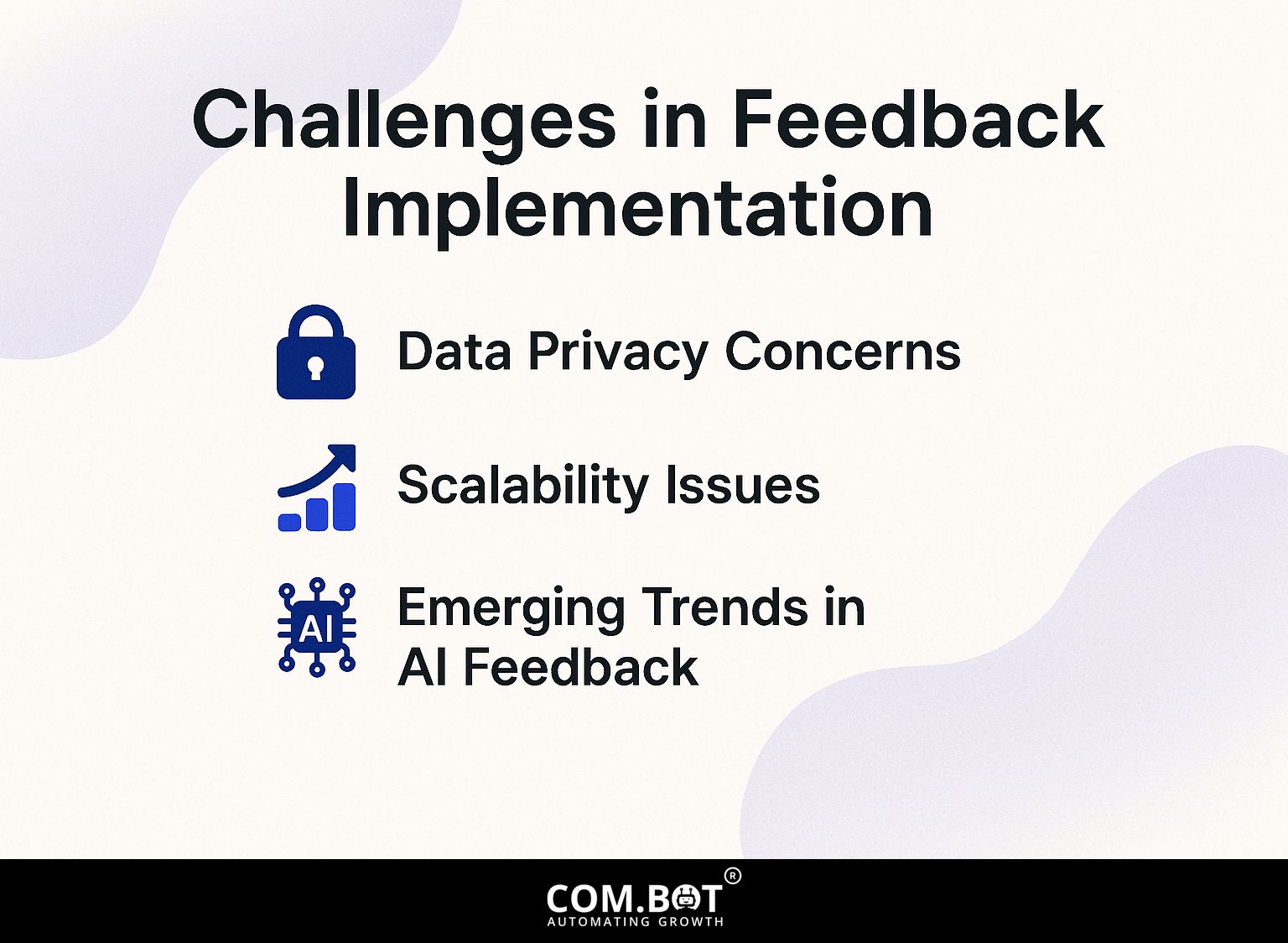
Using feedback loops in AI systems involves several problems, such as worries about data privacy and challenges related to growing size and capacity. For an extensive analysis of these challenges and potential solutions, our comprehensive study on the importance and improvement techniques of feedback for AI systems provides valuable insights.
Data Privacy Concerns
Data privacy remains a top concern, with regulations like GDPR requiring strict adherence to data security practices when collecting user feedback.
-
To follow regulations, begin by setting up clear ways to get user permission and inform them about how their data will be used.
-
Regularly audit your data collection processes to identify any gaps in privacy protocols.
-
Consider tools like OneTrust for managing consent and automating compliance tasks.
-
Educate your team about data protection practices through workshops and provide resources like the GDPR compliance checklist.
-
Set up a transparent feedback process that allows users to easily access, modify, or delete their data, reinforcing trust and adherence to regulations.
Scalability Issues
As AI systems scale, maintaining effective feedback loops becomes increasingly complex, often resulting in degraded performance metrics.
To tackle these problems, think about using a structured method. Start by establishing clear feedback channels where users can report issues directly.
Use tools like SurveyMonkey for organized feedback and Slack for instant communication. Next, use tools like Google Forms to gather data on AI performance, simplifying the process of collecting and arranging information.
Regularly review this feedback in designated meetings to identify trends and prioritize adjustments. By encouraging a culture of feedback, you can improve response times and make sure your systems grow to meet user needs.
Emerging Trends in AI Feedback
New trends like predictive monitoring and advanced recommendation systems are influencing how AI feedback systems are developing.
These developments allow AI systems to analyze user interactions in real time, adjusting responses based on behavior patterns.
For example, platforms like Google Analytics now provide predictions, helping businesses create more effective content strategies.
Implementing tools such as Mixpanel can deepen user engagement by providing detailed tracking of user behavior.
By using this information, companies can predict what users need and improve how they communicate with them, leading to higher customer satisfaction and loyalty.
Frequently Asked Questions
What is the importance of feedback in AI systems?
Getting feedback is important for AI systems because it helps them keep learning and get better at what they do. It helps fix any errors and improve the system for better outcomes.
How can feedback be collected for AI systems?
Feedback for AI systems can be collected through a variety of methods such as user surveys, user ratings, and user reviews. It can also be gathered through direct interactions with users or through monitoring user behavior.
Why is it necessary to continuously improve AI systems?
AI systems need to be continuously improved in order to stay relevant and effective. As technology changes and user needs shift, the system should improve to deliver accurate and effective results.
What are some techniques for improving AI systems based on feedback?
Based on feedback, AI systems can get better by re-training with new data, using data cleaning methods, improving algorithms, and including user feedback in the decision-making process.
How does feedback from users help in enhancing AI systems?
User feedback helps us understand how well AI systems work. It finds problems and suggests ways to make the system work better and more accurately.
How can AI systems use feedback to tailor user experiences?
By collecting feedback, AI systems can learn about what users like and how they act, which helps them tailor the experience for each user. This can improve user satisfaction and increase the system’s effectiveness in predicting and meeting user needs.


